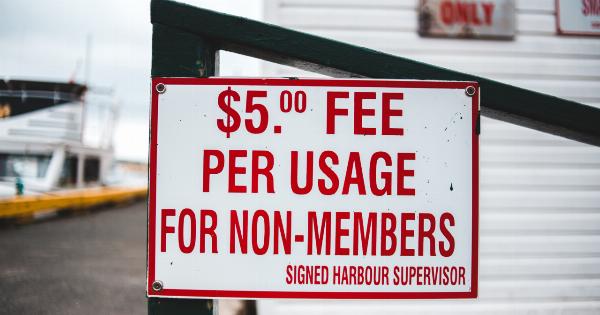Sinusitis is a common condition that affects many people worldwide. It occurs when the sinuses, which are air-filled cavities in the skull, become inflamed and swollen.
This inflammation can cause a variety of symptoms, including nasal congestion, facial pain, and headache.
Understanding Sinusitis
Sinusitis can be acute or chronic. Acute sinusitis typically lasts for a few weeks and is often caused by a viral infection, such as the common cold.
Chronic sinusitis, on the other hand, lasts for more than 12 weeks and is often due to recurrent infections or ongoing inflammation.
The sinuses are lined with a thin layer of tissue called the mucosa, which produces mucus to trap bacteria, viruses, and other particles that enter the nasal passages.
When the sinuses become inflamed, the mucosa swells, causing the openings of the sinuses to become blocked. This blockage can prevent mucus from draining properly, leading to an accumulation of mucus and the growth of bacteria or fungi.
Causes of Sinusitis
There are several factors that can contribute to the development of sinusitis:.
1. Viral Infections
The most common cause of sinusitis is a viral infection, such as the common cold or the flu. These infections can cause the sinuses to become inflamed, leading to sinusitis symptoms.
2. Bacterial Infections
In some cases, sinusitis may be caused by a bacterial infection. Bacteria can enter the sinuses through the nose or mouth and cause an infection. This is more common in cases of chronic sinusitis.
3. Allergies
Allergic reactions to substances such as pollen, dust mites, or pet dander can also lead to sinusitis. When these allergens are inhaled, the body produces an immune response, which can cause the sinuses to become inflamed.
4. Nasal Polyps
Nasal polyps are noncancerous growths that can develop in the lining of the nose or sinuses. When these polyps become enlarged, they can block the nasal passages and contribute to the development of sinusitis.
5. Structural Abnormalities
Structural abnormalities in the nose or sinuses, such as a deviated septum or narrow sinus openings, can make it difficult for the sinuses to drain properly. This can increase the risk of developing sinusitis.
6. Weak Immune System
A weakened immune system, often due to underlying health conditions or medical treatments, can make an individual more susceptible to developing sinusitis.
7. Environmental Factors
Exposure to certain environmental irritants, such as cigarette smoke, pollution, or chemicals, can irritate the sinuses and contribute to sinusitis.
Prevention and Treatment
There are several steps you can take to prevent sinusitis:.
1. Practice Good Hand Hygiene
Washing your hands regularly with soap and water can help reduce your risk of contracting viral or bacterial infections that can lead to sinusitis.
2. Avoid Allergens
If you have known allergies, try to avoid your triggers whenever possible. This may involve keeping windows closed during high pollen seasons or using allergen-proof covers on pillows and mattresses.
3. Use a Humidifier
Using a humidifier can add moisture to the air, which can help prevent the sinuses from becoming too dry and irritated.
4. Stay Hydrated
Drinking plenty of fluids can help thin the mucus in your sinuses, making it easier for them to drain properly.
5. Manage Nasal Congestion
If you have nasal congestion, using over-the-counter saline nasal sprays or rinses can help clear your nasal passages, reducing the risk of sinusitis.
6. Treat Underlying Conditions
If you have any underlying conditions, such as allergies or asthma, make sure to manage them properly to reduce the risk of sinusitis.
If you do develop sinusitis, treatment options may include:.
1. Nasal Decongestants
Decongestant medications can help reduce nasal congestion and open up the nasal passages, allowing for proper drainage of the sinuses.
2. Pain Relievers
Over-the-counter pain relievers, such as ibuprofen or acetaminophen, can help alleviate facial pain and headache associated with sinusitis.
3. Nasal Saline Irrigation
Rinsing the nasal passages with a saline solution can help flush out mucus and allergens, reducing inflammation and promoting proper drainage.
4. Antibiotics
In cases of bacterial sinusitis, your healthcare provider may prescribe antibiotics to treat the infection.
5. Allergy Medications
If sinusitis is caused by allergies, your healthcare provider may recommend allergy medications to help manage symptoms and reduce inflammation.
Conclusion
Sinusitis is a common condition that can cause uncomfortable symptoms.
Understanding the causes of sinusitis, such as viral or bacterial infections, allergies, nasal polyps, or structural abnormalities, can help you take steps to prevent its development. Practicing good hand hygiene, avoiding allergens, and managing underlying conditions can all help reduce the risk of sinusitis. If you do develop sinusitis, there are various treatment options available to alleviate symptoms and promote proper drainage.
Consult with your healthcare provider for an accurate diagnosis and appropriate treatment plan.





























